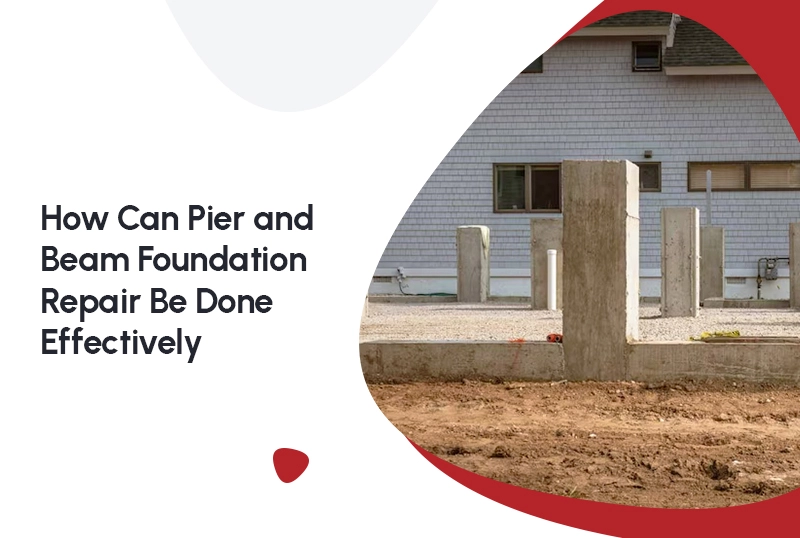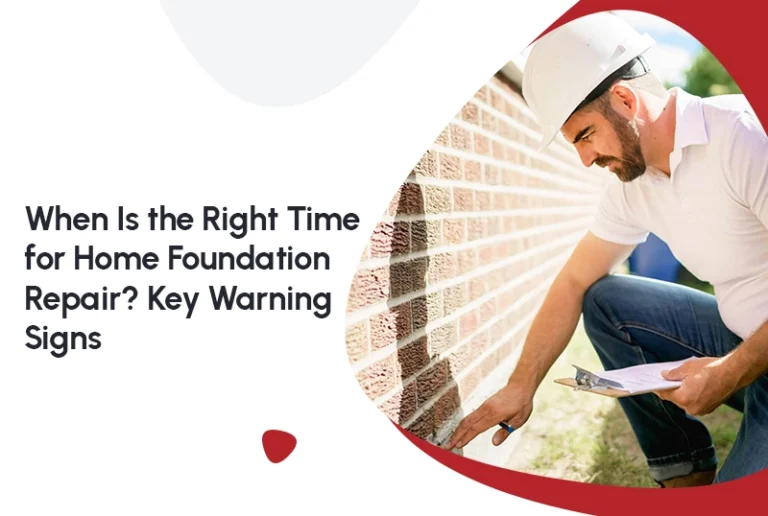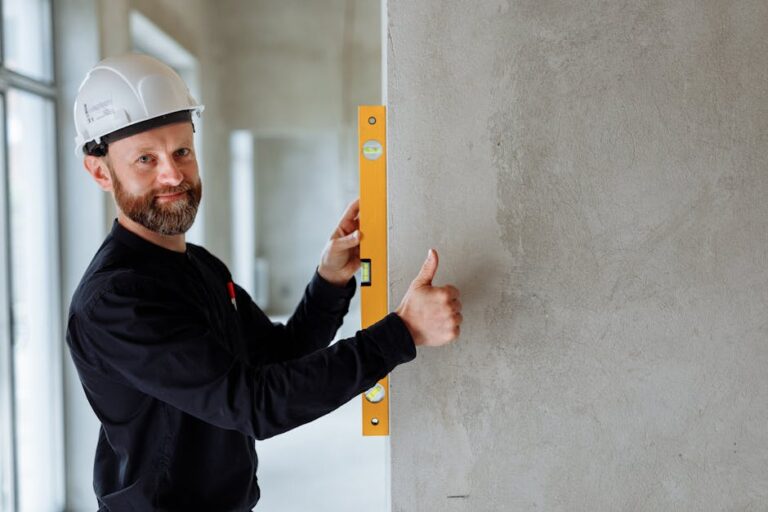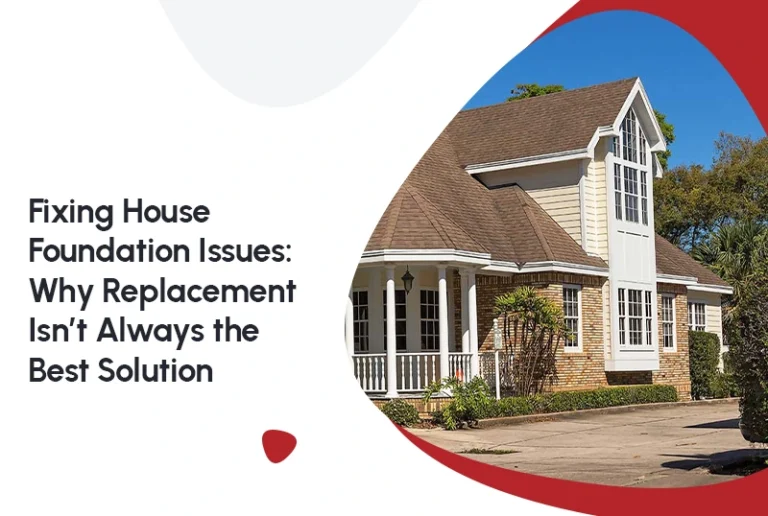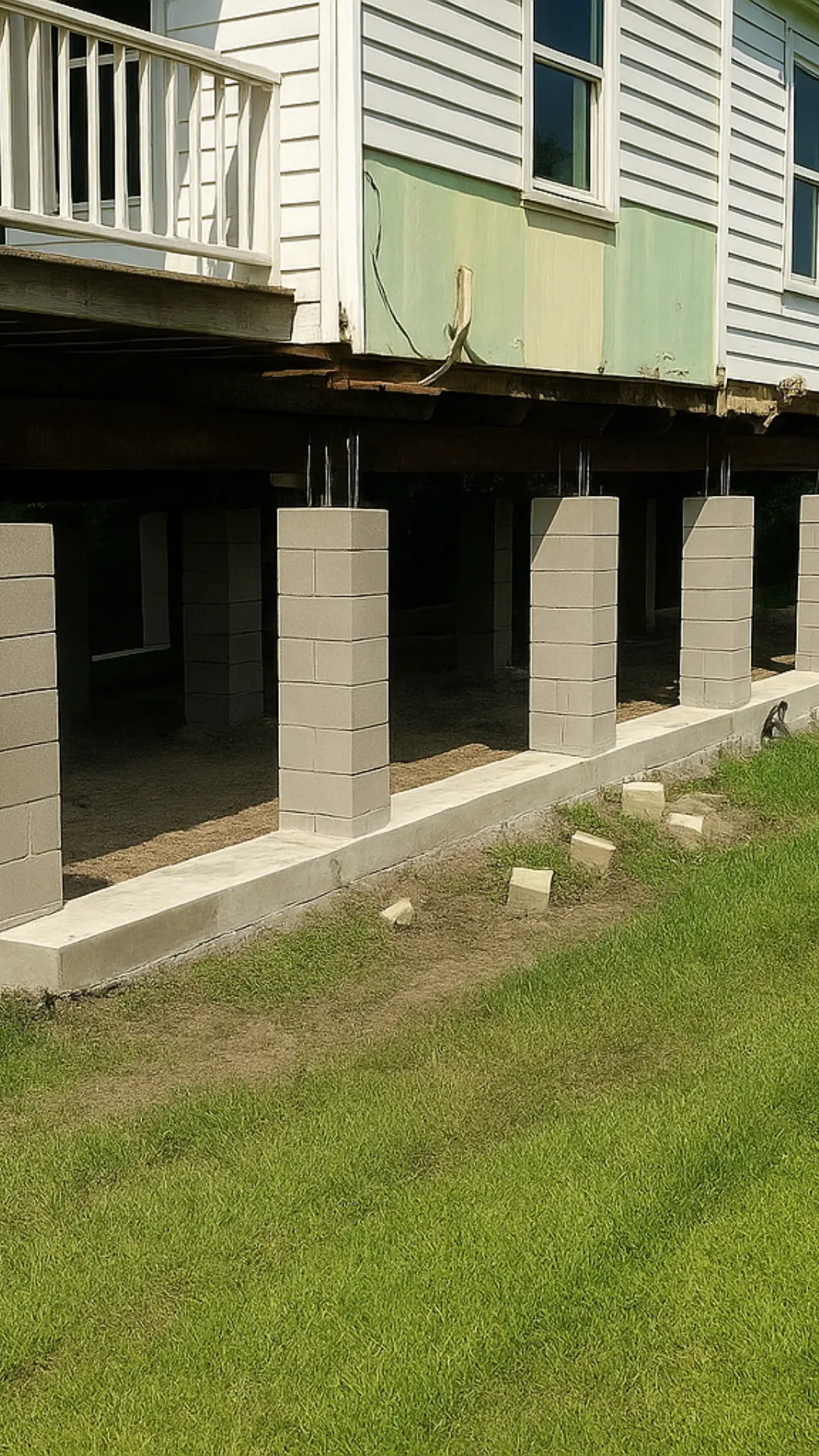A strong foundation is crucial for the safety and stability of your home. However, over time, foundations can suffer from damage caused by weather, settling, and wear and tear. One of the most common foundation types for older homes is the Post and Beam Construction. If you are experiencing issues with your home’s foundation, such as uneven floors, cracks in the walls, or doors that won’t close properly, it may be time to look into the pier and beam. In this blog, we’ll walk you through the necessary steps for fixing pier and beam foundation damage and provide you with essential insights on the repair process.
What Is a Post and Beam Construction?
A Post and Beam Construction is a type of foundation typically used in older homes. It consists of vertical piers (usually made of concrete, steel, or wood) that support beams, which in turn, support the structure of the house. This design creates a crawl space beneath the home, providing easy access to plumbing, electrical wiring, and ventilation systems.
Although this foundation type was once popular, it is more prone to damage from shifting soil, moisture issues, and aging materials. As a result, homeowners often notice uneven floors or misaligned doors.Fortunately, foundation repair specialists are skilled at addressing these issues and restoring the foundation to its original stability.
Signs of Damage
Knowing when to repair your Post and Beam Construction is crucial. Here are some common signs that indicate your foundation needs attention:
- Uneven Floors: One of the most obvious signs of foundation damage is uneven flooring. You may notice that certain areas of your home are sloping or the floor feels “bouncy” in certain spots.
- Cracks in Walls or Ceilings: Vertical cracks in your walls or ceilings may appear when the foundation shifts. These cracks are typically larger than hairline cracks and can be a clear indicator of foundational issues.
- Doors and Windows that Stick: If your doors and windows no longer close properly or get stuck, it could be a sign that the frame is misaligned due to a shifting foundation.
- Gaps in the Walls: Gaps may appear around doors and windows, particularly in areas where the foundation has settled.
- Sagging or Sinking Floors: Over time, Post and Beam may cause floors to sag or even sink. This could lead to structural instability in your home.
How to Fix Post and Beam Damage
When it comes to fixing a damaged pier and beam foundation, several steps are involved. Here’s a breakdown of the process and what you can expect during the repair:
1. Initial Inspection and Assessment
Before any repairs can be made, a professional foundation contractor will need to conduct a thorough inspection of your home’s foundation. The contractor will examine the condition of the beams, piers, and crawl space to determine the extent of the damage. During this phase, they will also assess the surrounding soil and check for any moisture or drainage issues.
It’s essential to hire an experienced foundation repair expert to ensure an accurate diagnosis of the problem. A professional will know exactly what to look for and be able to provide the best solution for your specific situation.
2. Shoring Up the Foundation
Once the damage is assessed, the next step is to shore up the foundation. This involves installing temporary supports to stabilize the home during the repair process. These supports are crucial for preventing any further settling or shifting during the repair.
The team may also begin to dig around the foundation to access the damaged piers and beams. Depending on the severity of the damage, the professionals may need to replace or reinforce certain beams or piers.
3. Leveling the Foundation
Leveling the foundation is an essential part of the repair process. To level the pier and beam foundation, the contractor may use hydraulic jacks to lift the house to its original position. This is typically done slowly and carefully to avoid damaging the structure.
Once the home is level, the foundation repair team will install permanent supports, such as new piers or adjustable foundation jacks, to hold the structure in place.
4. Installing New Post and Beams
In some cases, contractors may need to replace the existing post and beams entirely. They typically use concrete or steel for new piers, selecting materials that offer long-lasting stability. The repair team installs the new piers in the proper locations, spacing them evenly and aligning them with the beams.
Next, they install the new beams to properly support the house. Contractors set the beams on top of the piers and secure them using brackets or bolts.
5. Addressing Moisture and Drainage Issues
One of the primary causes of damage to post and beam is moisture. Whether it’s from rainwater, plumbing leaks, or inadequate drainage systems, moisture can weaken the foundation over time.
As part of the repair process, the contractor may also address any moisture or drainage issues that could have contributed to the foundation damage. This may include installing a vapor barrier in the crawl space, repairing any leaks, and improving the drainage around the house to prevent future water problems.
6. Final Inspection and Clean-Up
Once the repairs are complete, the foundation contractor will conduct a final inspection to ensure that everything is secure and properly aligned. They will check the leveling of the house, the stability of the piers, and the integrity of the beams.
After the inspection, the contractor will clean up the worksite and remove any debris, leaving your home in top condition.
Why Choose Concrete Slab Repair for Post and Beam Homes?
If your home has a Post and Beam, it’s important to understand that sometimes a concrete slab foundation repair may be needed as well, especially if you plan to convert your home to a slab foundation for increased stability, it’s important to understand the differences between the two foundation types. Both can experience similar issues, although concrete slab foundations tend to be more durable and less prone to shifting. However, ensuring proper repairs requires professional expertise.
Benefits of Timely Post and Beam Repair
- Increased Property Value: Foundation issues can decrease your home’s value. By repairing your Post and Beam promptly, you can maintain or even increase your property value.
- Improved Structural Integrity: Repairing your foundation ensures that your home remains structurally sound. It prevents further damage to walls, floors, and ceilings.
- Prevention of Future Issues: Addressing foundation problems early can prevent them from escalating into more expensive repairs down the line.
Conclusion
Repairing is a crucial step in maintaining the safety, stability, and value of your home. Whether you’re noticing uneven floors, cracks in the walls, or doors that won’t close, addressing foundation issues quickly can help prevent further damage and preserve the integrity of your home.
Make sure to consult with a professional foundation repair expert to ensure that the repair process is done correctly, efficiently, and safely. If you need assistance or any other type of foundation repair, don’t hesitate to reach out to a trusted contractor to help restore your home’s foundation to its best condition.
FAQs
1. How long does Post and Beam repair take?
The duration of the repair depends on the extent of the damage. Typically, it can take anywhere from a few days to a couple of weeks to complete.
2. Can I repair my Post and Beam myself?
Foundation repair is a complex process that requires professional expertise and equipment. It’s highly recommended to hire a licensed contractor for safety and optimal results.
3. How much does Post and Beam repair cost?
The cost can vary depending on the severity of the damage, the size of your home, and the materials used. It’s best to get a detailed estimate from a foundation repair specialist.
4. How can I prevent future foundation issues?
Regular maintenance, proper drainage around your home, and addressing plumbing leaks immediately can help prevent future foundation damage.
5. Is a concrete slab foundation better than a Post and Beam?
Both foundation types have their benefits. Concrete slab foundations are often more durable and less prone to moisture issues, while Post and Beam foundations allow for easier access to plumbing and electrical systems. It ultimately depends on your home’s needs.
